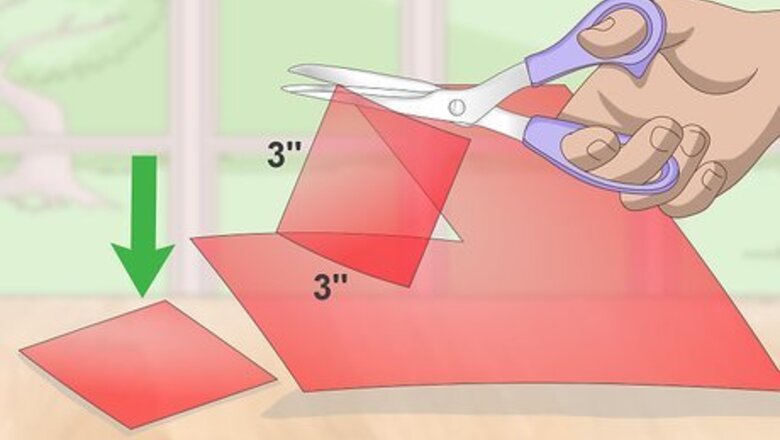
views
Making a Simple Camera Detector
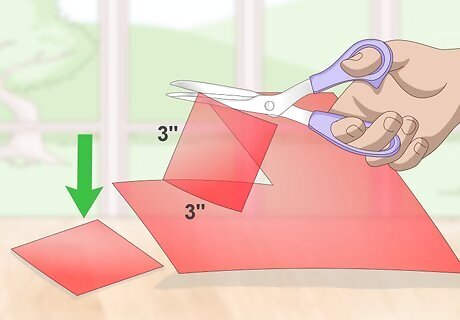
Cut out 2 3 in × 3 in (7.6 cm × 7.6 cm) squares of red cellophane. You can purchase red cellophane at an arts and crafts store or you can buy it online. Use a ruler to measure out the squares of cellophane and cut them to size with scissors. You can also use red plastic or vinyl as an alternative to cellophane as long as it’s transparent.
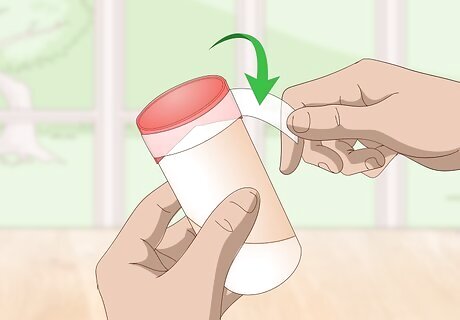
Tape one cellophane square over the end of a toilet paper roll. Place the cellophane over the hole on the end of the roll and wrap scotch tape around the sides so that the cellophane stays in place. This will act as your viewfinder for the hidden camera detector. If you don’t have a toilet paper or paper towel roll, you can roll up a piece of cardboard instead.
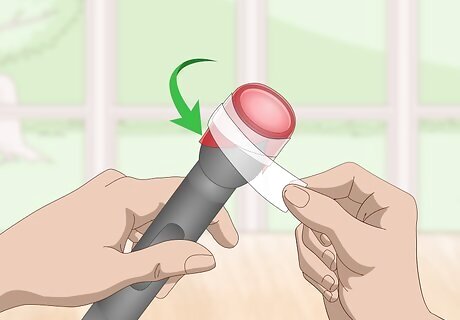
Tape the other square over the end of a flashlight. Place the cellophane over the top of the lens of the flashlight and tape down the sides. The flashlight should reflect against any lense from hidden cameras in the room. You can also unscrew the lens and place the cellophane in between the light and lens before screwing it back on if you don’t want to tape it.
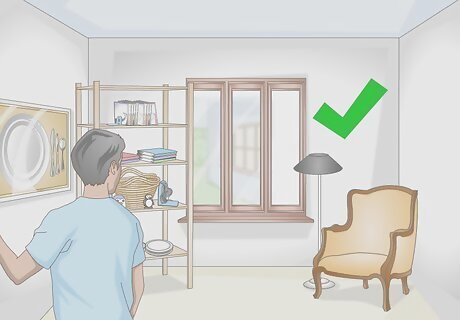
Turn off the lights in the room. It needs to be dark in the room so that you can see the refraction from the lense of any hidden cameras. You may not be able to see this refraction without the lights being off. You can also close the blinds or shutters in the room you’re inspecting to make it as dark as possible.
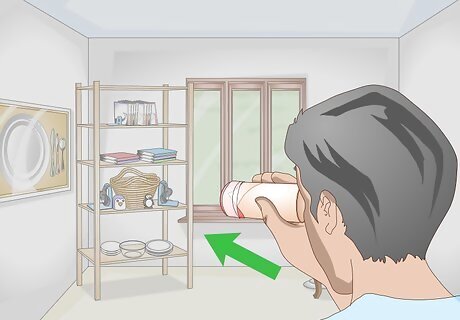
Scan the room while looking through the paper towel roll. Close one eye and hold the toilet paper roll up to your eye. Look at common hidden camera locations like the corner of the room, smoke detectors, or clocks. Whatever you’re looking at should appear red due to the red cellophane.
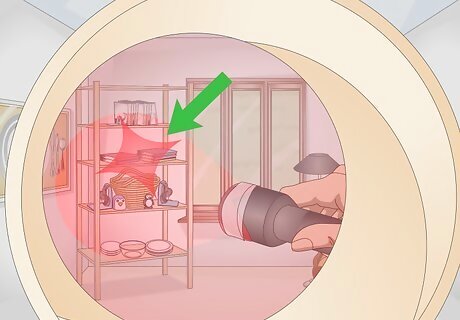
Shine the flashlight and look for red refractions. Shine the flashlight at the area where you’re looking with your viewfinder. If there is a hidden camera, the light from the flashlight will reflect off the lens in the camera. This will look like a bright red light through your paper towel roll. Once you see a refraction, inspect whatever object you think might be hiding a camera to verify that it is a hidden camera.
Finding Hidden Cameras in Other Ways

Look for small holes in common hidden camera spots. Hidden cameras will have a small hole where the lens is hidden. If you used your simple camera detector, you can verify shiny areas in the room by inspecting the object that refracted light. If you find a small hole where there isn’t normally one, there’s a very good chance that the object is hiding a hidden camera.
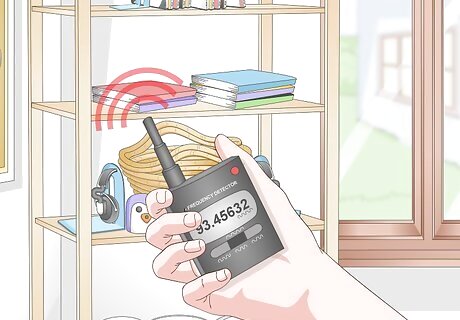
Purchase a radio frequency detector. You can purchase a radio frequency detector online or at select department stores. Turn on the detector and hold it up around objects that you think may be hiding a hidden camera. If the camera is emitting a radio frequency, the detector will find it and alert you. Radio frequency detectors can cost anywhere from $10 to $200. High-end frequency detectors come with extra features and may be more accurate than cheaper models. Keep in mind that the radio frequency detector will also pick up radio frequencies from other electronic equipment. You can also use a frequency detector to look for wireless microphones.
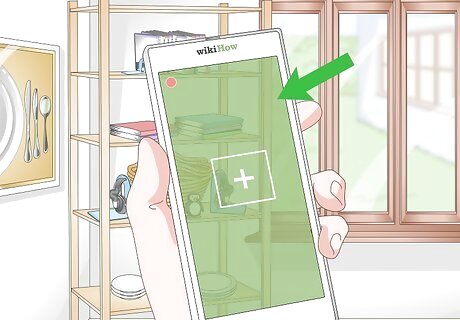
Download a hidden camera detector app for a cheaper alternative. Apps like Hidden Camera Detector, Glint Finder, and Wireless Camera Detector can be downloaded to your phone. These apps will either detect an electromagnetic field or the reflection from a hidden camera lens. Download the app and run it, then hold it up while you scan different objects in the room. Hidden Camera Finder costs $4.99 while Glint Finder and Wireless Camera Detector are free. You can also download a red strobe light app to use if you don't have a flashlight or red cellophane.
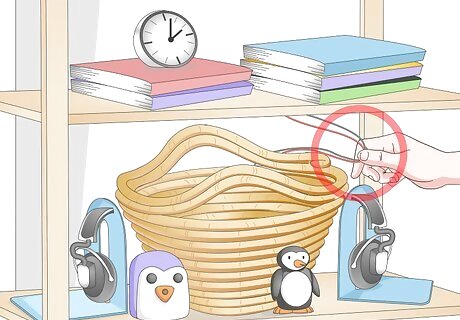
Look for wires or objects that look out of the ordinary. If the hidden camera requires a wired connection, you may notice excess wires that aren't normally there. If you notice that any appliances or electronic equipment have more wires than usual, inspect the device for any holes or scan it with a hidden camera detector to make sure that it isn’t hiding a camera. Hidden cameras are often hidden in clocks, fire alarms, and even AC wall chargers.
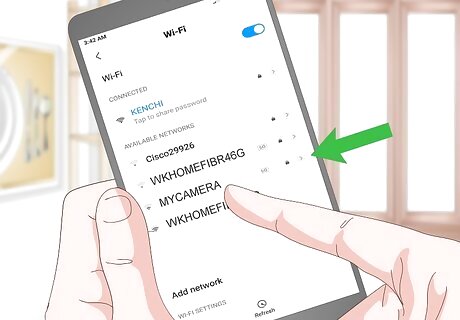
Check your local network for questionable devices. If the hidden camera is streaming video or recording video online, it’s most likely connected to the WiFi where you are. While most people rename their hidden camera device, some may forget. If you look at the WiFi connection and you see anything related to a camera, there’s a good chance there’s a hidden camera in your room. Many people will change the name of their device to something innocuous or a string of random letters and numbers.




















Comments
0 comment